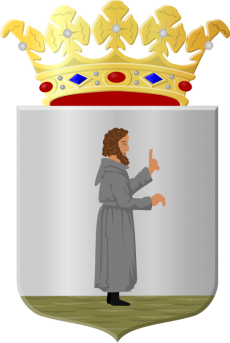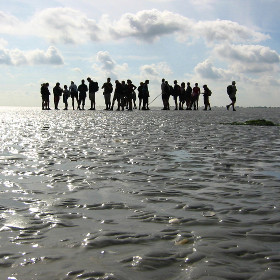Schiermonnikoog, one of the Wadden Islands in Friesland, originally named after Cistercian monks in grey robes who lived there centuries ago, will be home to monks once again after some 400 years.
With a population of about 830 people, Schiermonnikoog (‘Grey Monk Island’), will get a small Cistercian monastery for seven brothers who plan to leave their abbey in Diepenveen near Deventer, Overijssel and ‘retreat in simplicity’ on the island. Their current abbey in Deventer can house 100 monks, and they feel staying there doesn’t make much sense any more. Four of the seven brothers are already on Schiermonnikoog, while three of them are in Belgium waiting to join the rest.
(Links: www.nu.nl, www.frieschdagblad.nl, Photo of Coat of arms of Schiermonnikoog by Arch, some rights reserved)


 Legend has it that when God created the Groninger, the Groninger said: “Get off my land.” And as if to prove a point, Groningers (and Frisians) still walk across dozens of miles of sea each day, as
Legend has it that when God created the Groninger, the Groninger said: “Get off my land.” And as if to prove a point, Groningers (and Frisians) still walk across dozens of miles of sea each day, as